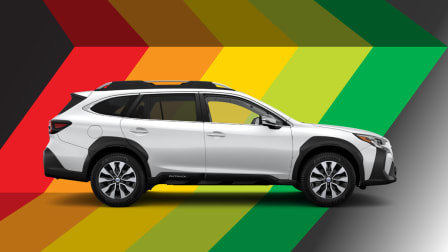Which Car Brands Have the Highest Road-Test Scores?
Factoring in more than 50 tests CR conducts, this new ranking reveals how automakers stack up for the all-around driving experience

There are more than 260 new cars, SUVs, and trucks on the market, creating a monumental challenge for car shoppers looking to buy the best vehicle for their needs and budget. That’s where Consumer Reports comes in. We purchase 45 to 50 cars every year and put them through an extensive, multiweek program with more than 50 tests and evaluations—each conducted by automotive experts. The result is a single composite score that encapsulates all the findings and a comprehensive written road test available to members.
“The road-test score is an amalgam of a given model’s driving experience, factoring in power delivery, handling agility, braking performance, ride comfort, noise isolation, seat comfort, controls’ ease of use, and fuel economy if it’s not an EV,” says Gabe Shenhar, associate director of CR’s auto test program. “For EVs, the score also reflects range, charging time, and ease of plugging and unplugging. Brands that produce well-rounded vehicles that are capable in multiple areas are ranked highly.”
Here, we rank the brands based on the average road-test score. This counts current models from across their product portfolios that CR has tested. The leading brands tend to excel in a wide range of tests and have strong consistent performance across the line. Midpack brands tend to have either more varied performance among the car types they offer and/or mediocre test results. Those brands at the bottom have clear deficits compared with their competitors.
Car Brands Ranked by Road-Test Score
Tested
How CR Conducts Road Tests
The staff at CR’s 327-acre Auto Test Center study the automotive market, identifying the new models and trim levels that are most relevant to our members. We then spend more than $2 million each year buying examples anonymously to evaluate as soon as they go on sale.
By doing this, we know what the car-buying experience is like, and we get cars from dealerships without any potential special prep that could occur with models provided directly by the automaker.
Each vehicle is put through 2,000 miles before we begin instrumented testing on our 6 miles of track. This gives the engine, tires, and brakes time to break in. Our mechanics inspect the vehicles before testing, doing work such as alignments to ensure that the cars are problem-free and that the test results will be relevant.
Automotive engineers, many with specialties based on graduate work and employment at major automakers, then conduct a series of tests, such as those for acceleration, braking, ride, handling, accident avoidance, and fuel economy (using a fuel meter spliced into the fuel line). We also evaluate interior space and packaging, measure cargo space, and assess controls and infotainment systems. These findings add up to a road-test score, allowing us to rank vehicles by class and compare brands based strictly on performance.
Ultimately, the road-test score is combined with reliability and owner satisfaction survey results, along with scores for safety features and crashworthiness, to create an Overall Score—a succinct way to tell a vehicle’s story.
See the detailed test results, in data and words, for any tested vehicle on their model page (search at the top of CR.org/cars) and in our Ratings A-Z interactive chart.
Learn more about how Consumer Reports tests cars.




















